Sam England
@samjakeengland.bsky.social
Ecology 🤝 physics. I'm a @humboldt-foundation.de postdoc fellow looking at weirdo animal eyes with @multipleye-lab.bsky.social 🕷️👀 PhD was uncovering electrostatic ecology🐛🦋⚡
Pinned
Sam England
@samjakeengland.bsky.social
· Jul 24
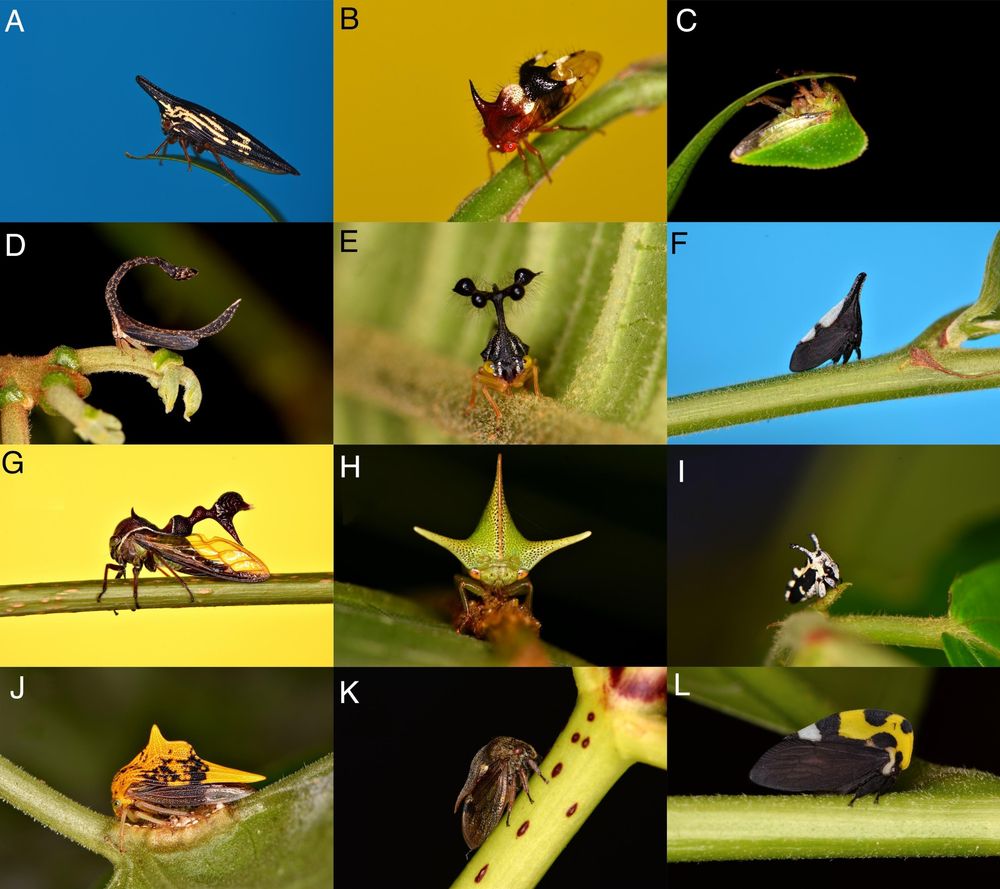
Electroreception in treehoppers: How extreme morphologies can increase electrical sensitivity | PNAS
The link between form and function of an organism’s morphology is usually apparent
or intuitive. However, some clades of organisms show remarkable ...
doi.org
Why do treehoppers look so weird?! Our latest paper, out this week in @pnas.org, suggests a perhaps unexpected reason - static electricity ⚡ We show that treehoppers can detect the electrostatic cues of predators and that their crazy shapes may boost their electrosensitivity! doi.org/10.1073/pnas...
Do you work (/want to work) with caterpillars? Or sensory systems? Or BOTH?! Well good golly do we have the paper for you! We explain the senses that caterpillars have, what they use them for, and how anthropogenic sensory pollution might be messing it all up 🐛 doi.org/10.1007/s003...

The sensory ecology of caterpillars - Journal of Comparative Physiology A
Caterpillars (larval Lepidoptera) are one of the most ecologically and evolutionarily significant taxa on Earth. As both feeders and food, they shape the dynamics of enumerate ecosystems on land. Key ...
doi.org
November 10, 2025 at 3:24 PM
Do you work (/want to work) with caterpillars? Or sensory systems? Or BOTH?! Well good golly do we have the paper for you! We explain the senses that caterpillars have, what they use them for, and how anthropogenic sensory pollution might be messing it all up 🐛 doi.org/10.1007/s003...
Reposted by Sam England
How do animals recognise incoming stimuli as predators? In this paper from the Casas' lab, they tested aerodynamical looming, and they show that size and velocity of the incoming object activated wind-sensitive neurons in 🦗. These responses are similar to visual looming! www.cell.com/current-biol...

Perception of aerodynamical looming stimuli
Clémençon et al. show that predator size and velocity are two key parameters for the
perception of the aerodynamical signature of approaching predators (aerodynamical
looming stimuli). They report tha...
www.cell.com
November 6, 2025 at 1:14 PM
How do animals recognise incoming stimuli as predators? In this paper from the Casas' lab, they tested aerodynamical looming, and they show that size and velocity of the incoming object activated wind-sensitive neurons in 🦗. These responses are similar to visual looming! www.cell.com/current-biol...
Very cool paper
Leaf? 🍃 Or katydid? 🦗
Our new
@plosbiology.org paper sheds light on how these incredible mimics evolved their disguises, and what this reveals about how complex adaptations arise. We find that coordinated evolution between traits might be the answer… plos.io/4oUE741 1/n
Our new
@plosbiology.org paper sheds light on how these incredible mimics evolved their disguises, and what this reveals about how complex adaptations arise. We find that coordinated evolution between traits might be the answer… plos.io/4oUE741 1/n

Functional and evolutionary synergy of trait components can explain the existence of leaf masquerade in katydids
The evolution of complex adaptations often involves synergistic changes in multiple traits that lack standalone function. This study shows that leaf masquerade in katydids evolved through concurrent m...
plos.io
November 5, 2025 at 7:56 AM
Very cool paper
Still can't quite believe I was lucky enough to be awarded the John and Laurine Proud Postdoctoral fellowship from the Lizard Island Reef Research Foundation. Spending 3 weeks on the island with @emweschke.bsky.social, finding and studying coral reef spiders underwater was an absolute dream! 🕷️🌊

October 30, 2025 at 5:52 PM
Still can't quite believe I was lucky enough to be awarded the John and Laurine Proud Postdoctoral fellowship from the Lizard Island Reef Research Foundation. Spending 3 weeks on the island with @emweschke.bsky.social, finding and studying coral reef spiders underwater was an absolute dream! 🕷️🌊
Reposted by Sam England
New #PhD ad alert!
Interested in wild #bee #cognition and #brains in different #bumblebees? Want to live in #Newcastle and the beautiful north-east of England?
Check out this project with me, @lenariab.bsky.social and Sarah Scott. Contact me for further information.
iapetus.ac.uk/studentships...
Interested in wild #bee #cognition and #brains in different #bumblebees? Want to live in #Newcastle and the beautiful north-east of England?
Check out this project with me, @lenariab.bsky.social and Sarah Scott. Contact me for further information.
iapetus.ac.uk/studentships...

The cognitive ecology of wild bumblebees
iapetus.ac.uk
October 28, 2025 at 11:22 AM
New #PhD ad alert!
Interested in wild #bee #cognition and #brains in different #bumblebees? Want to live in #Newcastle and the beautiful north-east of England?
Check out this project with me, @lenariab.bsky.social and Sarah Scott. Contact me for further information.
iapetus.ac.uk/studentships...
Interested in wild #bee #cognition and #brains in different #bumblebees? Want to live in #Newcastle and the beautiful north-east of England?
Check out this project with me, @lenariab.bsky.social and Sarah Scott. Contact me for further information.
iapetus.ac.uk/studentships...
Reposted by Sam England
How many plant species are buzz pollinated? After more than six years in the making, our paper on the convergent evolution of buzz pollinated flowers is out in @journal-evo.bsky.social. Thanks @draverbee.bsky.social @roszenil.bsky.social and all co-authors for your hard work! doi.org/10.1093/evol...

October 23, 2025 at 4:50 AM
How many plant species are buzz pollinated? After more than six years in the making, our paper on the convergent evolution of buzz pollinated flowers is out in @journal-evo.bsky.social. Thanks @draverbee.bsky.social @roszenil.bsky.social and all co-authors for your hard work! doi.org/10.1093/evol...
Reposted by Sam England
Reposting for the Monday morning scrollers! Funded PhD opportunity with me @multipleye-lab.bsky.social @bristolbiosci.bsky.social - spiders, their eyes, and their babies under long- and short-term light pollution!
Exciting times ahead - I'm beyond delighted to be joining @bristolbiosci.bsky.social in 2026! 🎉🕷️🎉🐌🎉
I'm also looking for a PhD student to join @multipleye-lab.bsky.social in our new home! Come and study the effects of light pollution on the evolution and development of spider eyes with us 🌃🕷️👀 👇
I'm also looking for a PhD student to join @multipleye-lab.bsky.social in our new home! Come and study the effects of light pollution on the evolution and development of spider eyes with us 🌃🕷️👀 👇
October 20, 2025 at 7:37 AM
Reposting for the Monday morning scrollers! Funded PhD opportunity with me @multipleye-lab.bsky.social @bristolbiosci.bsky.social - spiders, their eyes, and their babies under long- and short-term light pollution!
Reposted by Sam England
Exciting times ahead - I'm beyond delighted to be joining @bristolbiosci.bsky.social in 2026! 🎉🕷️🎉🐌🎉
I'm also looking for a PhD student to join @multipleye-lab.bsky.social in our new home! Come and study the effects of light pollution on the evolution and development of spider eyes with us 🌃🕷️👀 👇
I'm also looking for a PhD student to join @multipleye-lab.bsky.social in our new home! Come and study the effects of light pollution on the evolution and development of spider eyes with us 🌃🕷️👀 👇
October 17, 2025 at 1:38 PM
Exciting times ahead - I'm beyond delighted to be joining @bristolbiosci.bsky.social in 2026! 🎉🕷️🎉🐌🎉
I'm also looking for a PhD student to join @multipleye-lab.bsky.social in our new home! Come and study the effects of light pollution on the evolution and development of spider eyes with us 🌃🕷️👀 👇
I'm also looking for a PhD student to join @multipleye-lab.bsky.social in our new home! Come and study the effects of light pollution on the evolution and development of spider eyes with us 🌃🕷️👀 👇
Reposted by Sam England
The first of Jessie Foley’s work on the #evolution of #ageing in #Heliconius for your reading pleasure.
Come for the 348 day old butterfly, stay for the evolved slower rate of ageing, species*diet effects, and weightlifting for elderly butterflies 💪🏻👵🏻
🧪
Come for the 348 day old butterfly, stay for the evolved slower rate of ageing, species*diet effects, and weightlifting for elderly butterflies 💪🏻👵🏻
🧪
Evolution of increased longevity and slowed ageing in a genus of tropical butterfly https://www.biorxiv.org/content/10.1101/2025.08.29.673072v1
September 3, 2025 at 9:07 PM
The first of Jessie Foley’s work on the #evolution of #ageing in #Heliconius for your reading pleasure.
Come for the 348 day old butterfly, stay for the evolved slower rate of ageing, species*diet effects, and weightlifting for elderly butterflies 💪🏻👵🏻
🧪
Come for the 348 day old butterfly, stay for the evolved slower rate of ageing, species*diet effects, and weightlifting for elderly butterflies 💪🏻👵🏻
🧪
Reposted by Sam England
✨ It’s published! ✨
🕷️ Social spiders have bigger brains… but only in the right places! Our new study shows that in social huntsman spiders, regions for memory & vision processing are proportionally larger, supporting group living.
Read more: onlinelibrary.wiley.com/doi/10.1111/...
🕷️ Social spiders have bigger brains… but only in the right places! Our new study shows that in social huntsman spiders, regions for memory & vision processing are proportionally larger, supporting group living.
Read more: onlinelibrary.wiley.com/doi/10.1111/...

Volumetric Comparison of Overall Brain and Neuropil Size Between Social and Non‐social Spiders: Exploring the Social Brain Hypothesis
Brain size may be influenced by the cognitive demands of sociality (social brain hypothesis). We used microCT to compare CNS and brain volumes in social versus solitary huntsman and crab spiders. Soc...
onlinelibrary.wiley.com
August 28, 2025 at 6:11 AM
✨ It’s published! ✨
🕷️ Social spiders have bigger brains… but only in the right places! Our new study shows that in social huntsman spiders, regions for memory & vision processing are proportionally larger, supporting group living.
Read more: onlinelibrary.wiley.com/doi/10.1111/...
🕷️ Social spiders have bigger brains… but only in the right places! Our new study shows that in social huntsman spiders, regions for memory & vision processing are proportionally larger, supporting group living.
Read more: onlinelibrary.wiley.com/doi/10.1111/...
Reposted by Sam England
New @cornishjackdaws.bsky.social paper out today in @royalsociety.org Biology Letters. We found adult jackdaws can learn to tolerate usually bullied or ignored juveniles when they provided information about a new foraging resource.
royalsocietypublishing.org/doi/10.1098/...
royalsocietypublishing.org/doi/10.1098/...

Wild jackdaws learn to tolerate juveniles to exploit new foraging opportunities | Biology Letters
Social tolerance can enhance access to resources and is thought to be crucial in facilitating
the evolution of cooperation, social cognition and culture, but it is unknown whether
animals can optimize...
royalsocietypublishing.org
August 20, 2025 at 3:59 AM
New @cornishjackdaws.bsky.social paper out today in @royalsociety.org Biology Letters. We found adult jackdaws can learn to tolerate usually bullied or ignored juveniles when they provided information about a new foraging resource.
royalsocietypublishing.org/doi/10.1098/...
royalsocietypublishing.org/doi/10.1098/...
Reposted by Sam England
One of the most-viewed PNAS articles in the last week is “Electroreception in treehoppers: How extreme morphologies can increase electrical sensitivity.” Explore the article here: www.pnas.org/doi/10.1073/...
For more trending articles, visit ow.ly/Me2U50SkLRZ.
For more trending articles, visit ow.ly/Me2U50SkLRZ.

August 13, 2025 at 3:59 PM
One of the most-viewed PNAS articles in the last week is “Electroreception in treehoppers: How extreme morphologies can increase electrical sensitivity.” Explore the article here: www.pnas.org/doi/10.1073/...
For more trending articles, visit ow.ly/Me2U50SkLRZ.
For more trending articles, visit ow.ly/Me2U50SkLRZ.
Reposted by Sam England
Interested in doing a 3-month #internship on treehopper vibrational communication at STRI in Panama? 🤩 Check this out:
stri.si.edu/academic-pro...
Contact me for more info! #AnimalBehavior
stri.si.edu/academic-pro...
Contact me for more info! #AnimalBehavior

August 12, 2025 at 5:00 PM
Interested in doing a 3-month #internship on treehopper vibrational communication at STRI in Panama? 🤩 Check this out:
stri.si.edu/academic-pro...
Contact me for more info! #AnimalBehavior
stri.si.edu/academic-pro...
Contact me for more info! #AnimalBehavior
Reposted by Sam England
Do you do moth trapping in the UK? We'd love your help! 💡
At @ukceh.bsky.social we're training & testing AI to detect multiple moths in a single image.
Send us top-down photos of multiple moths on egg trays to support this work.
More info & form: forms.gle/e3HzBPEd7RVV...
#mothsmatter #TeamMoth
At @ukceh.bsky.social we're training & testing AI to detect multiple moths in a single image.
Send us top-down photos of multiple moths on egg trays to support this work.
More info & form: forms.gle/e3HzBPEd7RVV...
#mothsmatter #TeamMoth

August 7, 2025 at 2:23 PM
Do you do moth trapping in the UK? We'd love your help! 💡
At @ukceh.bsky.social we're training & testing AI to detect multiple moths in a single image.
Send us top-down photos of multiple moths on egg trays to support this work.
More info & form: forms.gle/e3HzBPEd7RVV...
#mothsmatter #TeamMoth
At @ukceh.bsky.social we're training & testing AI to detect multiple moths in a single image.
Send us top-down photos of multiple moths on egg trays to support this work.
More info & form: forms.gle/e3HzBPEd7RVV...
#mothsmatter #TeamMoth
Reposted by Sam England
🎓 #PhD in Animal Metabolomics & Ecology @unigreifswald🇩🇪
Sexual and non-sexual communication in a widow spider 🕷️⚗️
DFG-funded | 3 years | behavioral ecology & chemical ecology
Details: bit.ly/widow-phd
Apply by Sept 24, start in February 2026
#AcademicSky #pleaserepost
Sexual and non-sexual communication in a widow spider 🕷️⚗️
DFG-funded | 3 years | behavioral ecology & chemical ecology
Details: bit.ly/widow-phd
Apply by Sept 24, start in February 2026
#AcademicSky #pleaserepost

Chemical Ecology of Widow Spiders
We are hiring for a funded PhD positionapply here Untangling pheromonal communication between and within the sexes of widow spiders Our group is undertaking a comprehensive exploration of the chemi…
bit.ly
July 31, 2025 at 9:26 AM
🎓 #PhD in Animal Metabolomics & Ecology @unigreifswald🇩🇪
Sexual and non-sexual communication in a widow spider 🕷️⚗️
DFG-funded | 3 years | behavioral ecology & chemical ecology
Details: bit.ly/widow-phd
Apply by Sept 24, start in February 2026
#AcademicSky #pleaserepost
Sexual and non-sexual communication in a widow spider 🕷️⚗️
DFG-funded | 3 years | behavioral ecology & chemical ecology
Details: bit.ly/widow-phd
Apply by Sept 24, start in February 2026
#AcademicSky #pleaserepost
Reposted by Sam England
Hiring 4 postdocs — organismal biophysics, soft robotics, frugal Raman diagnostics, or your own bold idea.
3-year funding, $65K+ benefits. GT (Atlanta) now → CU Boulder BioFrontiers Institute in Fall ’26.
PDF/details in next post. Tag/share if someone comes to mind. 🧪🪲🪳#livingphysics
3-year funding, $65K+ benefits. GT (Atlanta) now → CU Boulder BioFrontiers Institute in Fall ’26.
PDF/details in next post. Tag/share if someone comes to mind. 🧪🪲🪳#livingphysics

July 30, 2025 at 12:42 PM
Hiring 4 postdocs — organismal biophysics, soft robotics, frugal Raman diagnostics, or your own bold idea.
3-year funding, $65K+ benefits. GT (Atlanta) now → CU Boulder BioFrontiers Institute in Fall ’26.
PDF/details in next post. Tag/share if someone comes to mind. 🧪🪲🪳#livingphysics
3-year funding, $65K+ benefits. GT (Atlanta) now → CU Boulder BioFrontiers Institute in Fall ’26.
PDF/details in next post. Tag/share if someone comes to mind. 🧪🪲🪳#livingphysics
My photo made it onto the cover of @pnas.org! 🎉You can read the related article about the amazing morphologies of treehoppers increasing their sensitivity to static electricity here: doi.org/10.1073/pnas...

July 30, 2025 at 9:29 AM
My photo made it onto the cover of @pnas.org! 🎉You can read the related article about the amazing morphologies of treehoppers increasing their sensitivity to static electricity here: doi.org/10.1073/pnas...
Reposted by Sam England
About 3200 insect species around the world have evolved a structure on their back called a helmet.
But the appendage isn’t just for show: It allows for the detection of electric fields—perhaps helping them distinguish friend from foe. scim.ag/46xid0Y
But the appendage isn’t just for show: It allows for the detection of electric fields—perhaps helping them distinguish friend from foe. scim.ag/46xid0Y
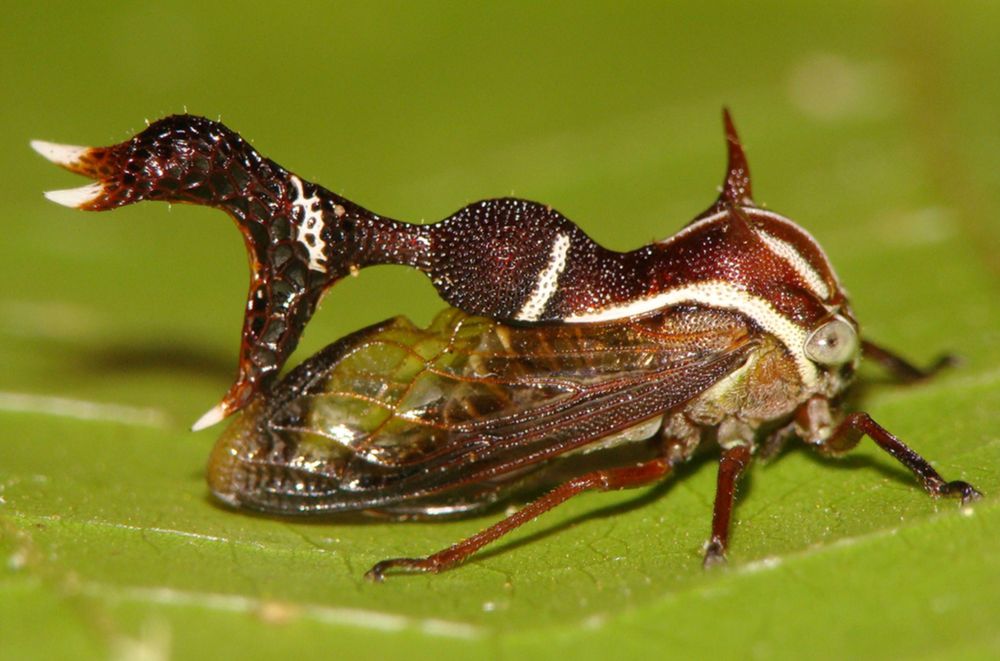
Insect X-Men: Helmets help these odd bugs sense electric fields
Ability may help treehoppers distinguish friend from foe
scim.ag
July 28, 2025 at 3:35 PM
About 3200 insect species around the world have evolved a structure on their back called a helmet.
But the appendage isn’t just for show: It allows for the detection of electric fields—perhaps helping them distinguish friend from foe. scim.ag/46xid0Y
But the appendage isn’t just for show: It allows for the detection of electric fields—perhaps helping them distinguish friend from foe. scim.ag/46xid0Y
Why do treehoppers look so weird?! Our latest paper, out this week in @pnas.org, suggests a perhaps unexpected reason - static electricity ⚡ We show that treehoppers can detect the electrostatic cues of predators and that their crazy shapes may boost their electrosensitivity! doi.org/10.1073/pnas...

Electroreception in treehoppers: How extreme morphologies can increase electrical sensitivity | PNAS
The link between form and function of an organism’s morphology is usually apparent
or intuitive. However, some clades of organisms show remarkable ...
doi.org
July 24, 2025 at 11:44 AM
Why do treehoppers look so weird?! Our latest paper, out this week in @pnas.org, suggests a perhaps unexpected reason - static electricity ⚡ We show that treehoppers can detect the electrostatic cues of predators and that their crazy shapes may boost their electrosensitivity! doi.org/10.1073/pnas...
Reposted by Sam England
Visual information in the dark: Bioluminescence and perceptual design through evolution - Oakley - Functional Ecology - Wiley Online Library besjournals.onlinelibrary.wiley.com/doi/10.1111/...

Visual information in the dark: Bioluminescence and perceptual design through evolution
Read the free Plain Language Summary for this article on the Journal blog.
besjournals.onlinelibrary.wiley.com
July 20, 2025 at 2:47 PM
Visual information in the dark: Bioluminescence and perceptual design through evolution - Oakley - Functional Ecology - Wiley Online Library besjournals.onlinelibrary.wiley.com/doi/10.1111/...
Incredibly honoured to have played a small part in Benito's masterpiece 🦋👀🌳
So very excited for the magnum opus of my #PhD to finally be out in @pnas.org. 🎉🎉 We demosntrate that mutualistic co-mimicking tropical butterflies not only converge in light microhabitat but, as a consequence, have also converged in visual system morphology! 1/n😀
www.pnas.org/doi/abs/10.1...
www.pnas.org/doi/abs/10.1...
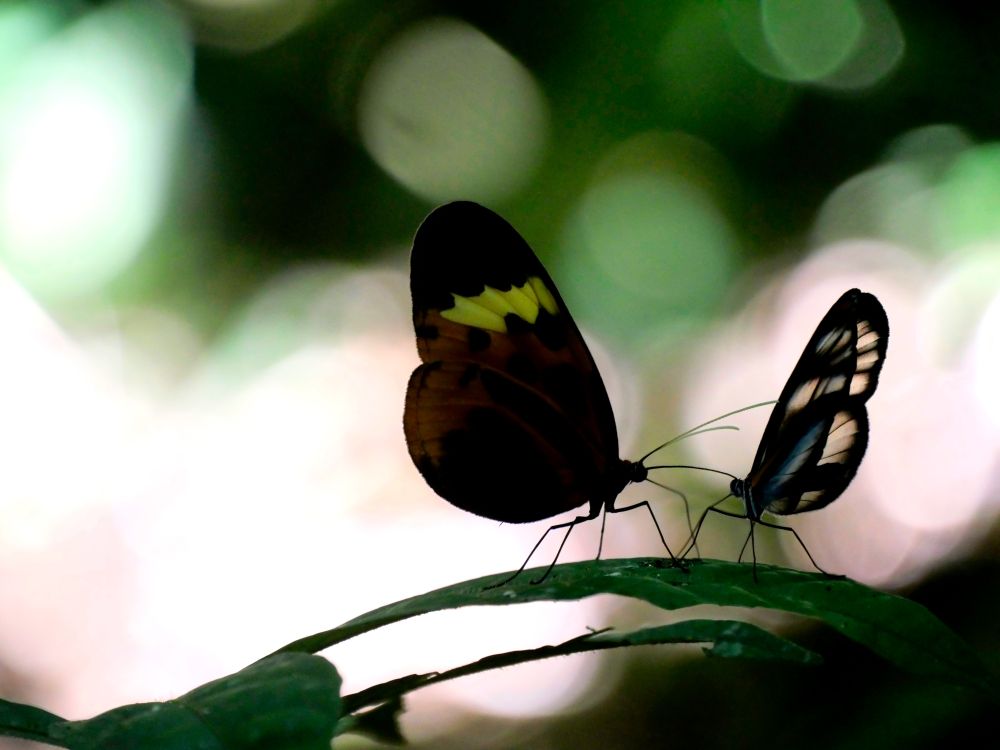
July 16, 2025 at 1:59 PM
Incredibly honoured to have played a small part in Benito's masterpiece 🦋👀🌳
Reposted by Sam England
New from @gadusmo.bsky.social’s PhD thesis 👐🏼 with @dickmerrill.bsky.social, Jake Morris, Camilo Salazar and Carolina Pardo-Díaz
‘Repeated evolution of reduced visual investment at the onset of ecological speciation in high-altitude #Heliconius butterflies’ 1/n 🧪
academic.oup.com/evlett/advan...
‘Repeated evolution of reduced visual investment at the onset of ecological speciation in high-altitude #Heliconius butterflies’ 1/n 🧪
academic.oup.com/evlett/advan...
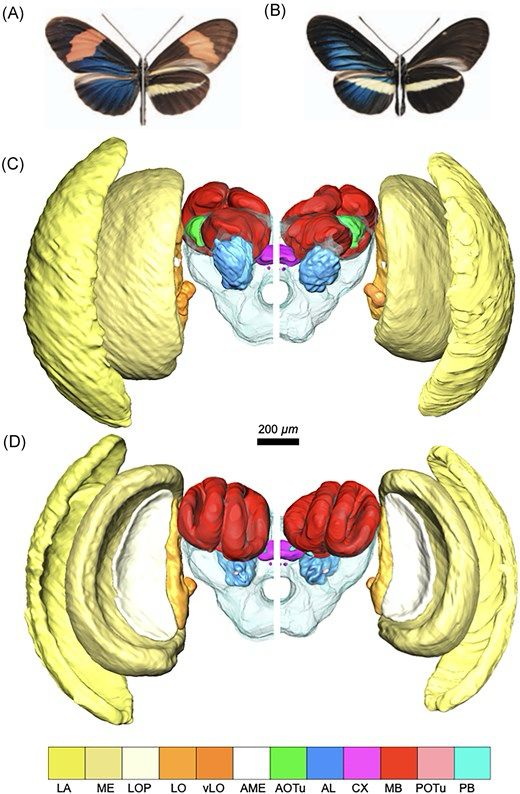
Repeated evolution of reduced visual investment at the onset of ecological speciation in high-altitude Heliconius butterflies
Abstract. Colonization of new habitats is typically followed by divergent selection acting on traits that are immediately important for fitness. For exampl
academic.oup.com
July 10, 2025 at 3:06 PM
New from @gadusmo.bsky.social’s PhD thesis 👐🏼 with @dickmerrill.bsky.social, Jake Morris, Camilo Salazar and Carolina Pardo-Díaz
‘Repeated evolution of reduced visual investment at the onset of ecological speciation in high-altitude #Heliconius butterflies’ 1/n 🧪
academic.oup.com/evlett/advan...
‘Repeated evolution of reduced visual investment at the onset of ecological speciation in high-altitude #Heliconius butterflies’ 1/n 🧪
academic.oup.com/evlett/advan...
Reposted by Sam England
Why do imperfect mimics (such as many hoverflies) exist? We created 3D printed replicas of flies, wasps and our own custom intermediates and then "asked" various predators what they thought of our 3D stimuli. Read all about it here: www.nature.com/articles/s41...

Mapping the adaptive landscape of Batesian mimicry using 3D-printed stimuli - Nature
Birds have an excellent ability to learn to discriminate harmless insects from those that they mimic on the basis of subtle differences in appearance.
www.nature.com
July 2, 2025 at 6:32 PM
Why do imperfect mimics (such as many hoverflies) exist? We created 3D printed replicas of flies, wasps and our own custom intermediates and then "asked" various predators what they thought of our 3D stimuli. Read all about it here: www.nature.com/articles/s41...
Reposted by Sam England
I am looking for a Postdoc and a PhD student who want to study the neuronal mechanisms of the bee's waggle dance. 🐝 More details can be found on our webpage:
www.spatial-navigation.com/open-positio...
www.spatial-navigation.com/open-positio...

Open Positions
If our research profile evoked your interest of working with us on the spatial memory of honeybees, then you are warmly welcommed to contact us. What we offer We offer the infrastructure of...
www.spatial-navigation.com
July 2, 2025 at 2:37 PM
I am looking for a Postdoc and a PhD student who want to study the neuronal mechanisms of the bee's waggle dance. 🐝 More details can be found on our webpage:
www.spatial-navigation.com/open-positio...
www.spatial-navigation.com/open-positio...
Reposted by Sam England
Excited to share my review @jphysiol.bsky.social :
Can we study whisker movements to gain insights into the natural sensory behaviours of mammals?
doi.org/10.1113/JP28...
I recommend developing more social and active foraging tasks and including a wider variety of species in lab studies
Can we study whisker movements to gain insights into the natural sensory behaviours of mammals?
doi.org/10.1113/JP28...
I recommend developing more social and active foraging tasks and including a wider variety of species in lab studies
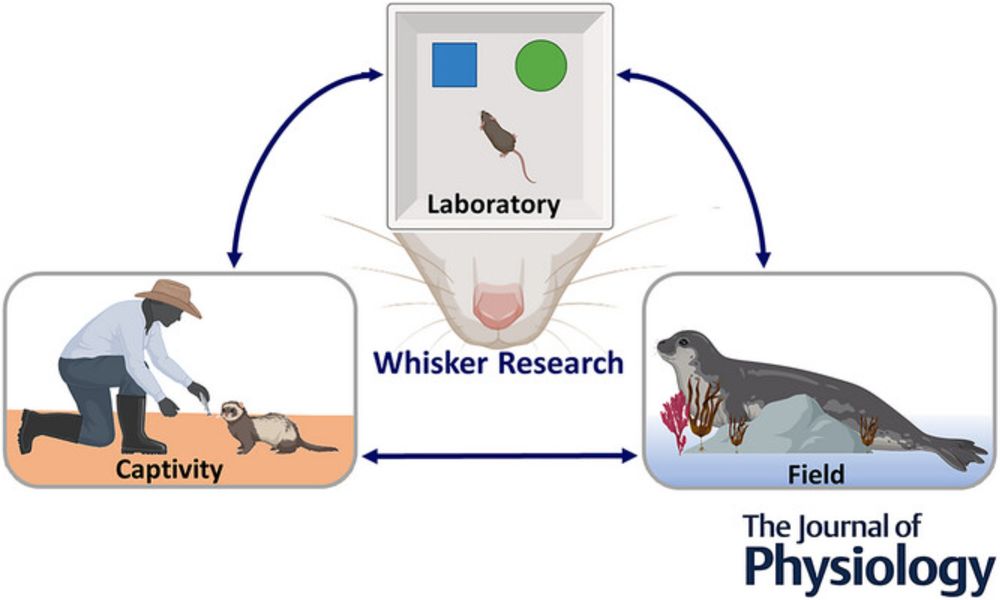
Can we study whisker movements to gain insights into the natural sensory behaviours of mammals?
Abstract figure legend The recommended future of whisker science research is integrating findings from the laboratory with studies from other captive institutions (such as zoos, rehabilitation centre...
doi.org
June 28, 2025 at 7:12 AM
Excited to share my review @jphysiol.bsky.social :
Can we study whisker movements to gain insights into the natural sensory behaviours of mammals?
doi.org/10.1113/JP28...
I recommend developing more social and active foraging tasks and including a wider variety of species in lab studies
Can we study whisker movements to gain insights into the natural sensory behaviours of mammals?
doi.org/10.1113/JP28...
I recommend developing more social and active foraging tasks and including a wider variety of species in lab studies

